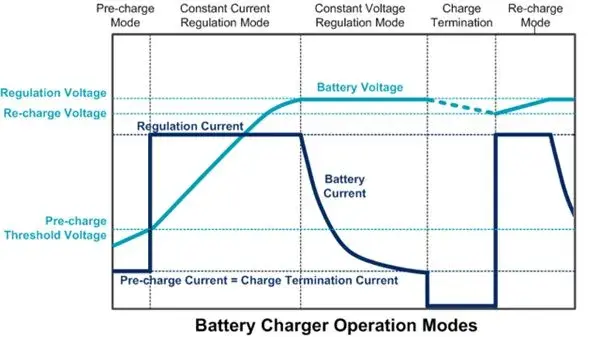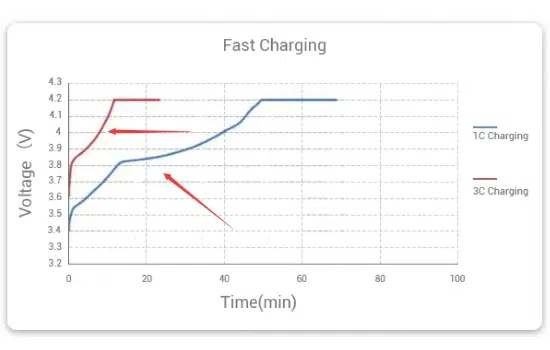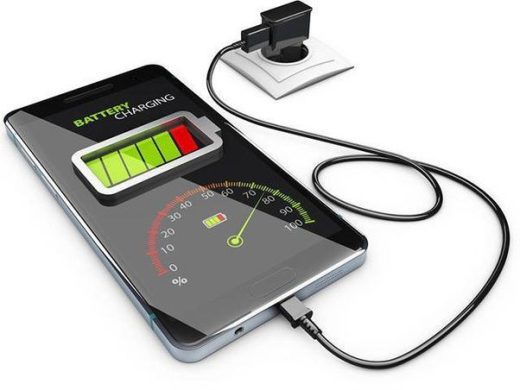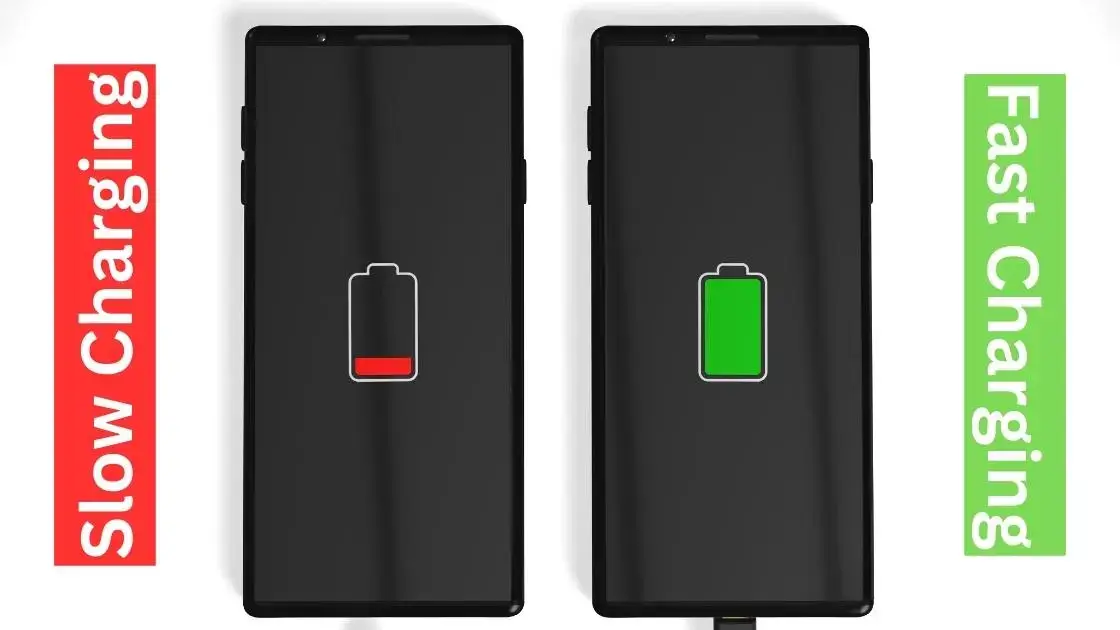Wiele osób ma wątpliwości co do wyboru między wolnym a szybkim ładowaniem. Jaka jest różnica między szybkim ładowaniem a wolnym ładowaniem?
Jak różnica czasu między tymi dwiema metodami ładowania wpłynie na użycie baterii litowych?
Celem tego artykułu jest przedstawienie kompleksowego spojrzenia na porównanie zalet i wad wolnego i szybkiego ładowania, co pozwala zrozumieć, która metoda ładowania jest bardziej odpowiednia dla Twojej baterii litowej.
Jak wygląda proces ładowania akumulatorów litowych?

Zanim omówimy zalety i wady szybkiego i wolnego ładowania, opanowanie zasady ładowania akumulatorów litowych to podstawa.
Baterie litowo-jonowe są szeroko stosowane w urządzeniach przenośnych, takich jak smartfony i laptopy. Jego cechą charakterystyczną jest to, że jony litu przemieszczają się pomiędzy dodatnią i ujemną elektrodą akumulatora podczas cyklu ładowania i rozładowywania.
Podczas procesu ładowania, jony litu przemieszczają się od elektrody dodatniej (katoda) do elektrody ujemnej (anoda) akumulatora przez elektrolit. Podczas wypisu, jony litu powracają z elektrody ujemnej do elektrody dodatniej, uwalnianie energii elektrycznej do użytku sprzętu.
Utrzymanie zrównoważonego i uporządkowanego procesu ładowania ma kluczowe znaczenie dla przedłużenia żywotności i utrzymania wydajności akumulatorów litowych.
Czy szybkie ładowanie jest odpowiednie dla akumulatorów litowych?

Technologia szybkiego ładowania znacznie skraca czas potrzebny do uzupełnienia energii akumulatora. Na przykład, Szybkie ładowanie DC może pomóc w posiadaniu pojazdów elektrycznych 80% zasięg mniejszy niż 0,5h.
Ta metoda ładowania przyspiesza proces ładowania poprzez zwiększenie poziomu prądu. Szybsze ładowanie oznacza, że krótszy jest czas oczekiwania na pełne naładowanie.
Korzystając z szybkiego ładowania, można ładować baterie litowe 0% do wyższego procentu w bardzo krótkim czasie.
Jednakże, należy zauważyć, że nie wszystkie baterie litowe obsługują technologię szybkiego ładowania. Zależy to od projektu producenta dotyczącego wydajności akumulatora.
Podobnie jak baterie litowo-żelazowo-fosforanowe i trójskładnikowe baterie litowe, ten pierwszy jest bardziej odpowiedni do powolnego ładowania, podczas gdy ten drugi jest bardziej odpowiedni do szybkiego ładowania.
Ich ładowarki do akumulatorów litowych można dostosować do potrzeb ładowania, a to, czy można je szybko ładować, zależy głównie od typu akumulatora i projektu producenta dotyczącego wydajności akumulatora.
Każdy producent baterii litowych skonfiguruje interfejsy wolnego/szybkiego ładowania w oparciu o charakterystykę baterii, a system BMS będzie jednolicie zarządzał procesem ładowania. O ile ładowanie odbywa się zgodnie z wymaganiami producenta, to jest bezpieczne.
Ogólnie mówiąc, do szybkiego ładowania akumulatorów litowych nie zaleca się używania nieoryginalnych ładowarek szybkiego ładowania, ponieważ szybkie ładowanie impulsowe może uszkodzić płytkę ochronną akumulatora, powodując jego awarię i prowadząc do poważnych problemów.
Szybkość ładowania i rozładowywania akumulatorów litowych zależy od prądu ładowania i rozładowywania na jednostkę pojemności znamionowej, zwykle reprezentowane przez „C”.
Na przykład, akumulator o pojemności znamionowej 100Ah, jeśli jest ładowany i rozładowywany prądem 20A, ma szybkość rozładowania ładunku wynoszącą 0,2°C.
Zazwyczaj, prąd ładowania akumulatorów litowych wynosi od 0,2°C do 1°C. Im wyższy prąd, tym większa prędkość ładowania, ale jednocześnie, tym większe jest nagrzewanie się akumulatora.
Obecnie, Bateria GycxSolar technologia obsługuje ładowanie i rozładowywanie 1C. Dla innych akumulatorów, zalecamy ładowanie 0,2C.
Czy szybkie ładowanie niszczy akumulatory??
Główną zaletą szybkiego ładowania jest oszczędność czasu, szybko ładuje urządzenie, przywraca użycie, i pozwala uniknąć długiego czasu oczekiwania.
Szybkie ładowanie jest szczególnie ważne w sytuacjach awaryjnych lub gdy wymagane jest szybkie ładowanie w podróży.
Ale wady szybkiego ładowania są również bardzo widoczne.
W miarę wzrostu obecnego poziomu, wytwarza się więcej ciepła, co może mieć niekorzystny wpływ na stan akumulatora.
Czy szybkie ładowanie wpływa na żywotność baterii?? Odpowiedź brzmi tak.
Przegrzanie może prowadzić do zmniejszenia wydajności baterii, zmniejszając pojemność i żywotność baterii.
Ponadto, szybkie ładowanie może prowadzić do zwiększonych wahań napięcia, wpływające na stabilność i bezpieczeństwo procesu ładowania.
Skład chemiczny akumulatorów litowych różni się od składu chemicznego akumulatorów kwasowo-ołowiowych, wymagające ładowania stopniowego stałym napięciem i stałym prądem. Szybkie ładowanie oszczędza czas, ale może spowodować większe uszkodzenie baterii litowych.
Ze względu na zjawisko polaryzacji wewnątrz akumulatora, maksymalny prąd ładowania, jaki może przyjąć akumulator, będzie się zmniejszał wraz ze wzrostem liczby cykli ładowania i rozładowywania.
Producenci akumulatorów litowych do pojazdów elektrycznych przeanalizowali, że czynniki takie jak rozkład reakcji elektrolitu i wytwarzanie gazu mogą zwiększać czynnik ryzyka, mieć wpływ na bezpieczeństwo baterii litowych, i skrócić żywotność akumulatorów innych niż energetyczne.
A więc jeśli chodzi o użytkowanie, Baterie litowe nadają się do szybkiego ładowania, jednak nadal jest wiele do poprawy pod względem technologicznym.
Czy wolniejsze ładowanie jest lepsze dla akumulatora??

Powolne ładowanie, zwane także ładowaniem podtrzymującym lub ładowaniem standardowym, to powszechnie stosowana metoda ładowania akumulatorów litowo-jonowych. W porównaniu z technologią szybkiego ładowania, tradycyjne ładowanie charakteryzuje się mniejszym prądem i dłuższymi cyklami ładowania.
Ta metoda ładowania jest ogólnie uważana za bardziej niezawodną i delikatniejszą, umożliwiając powolne ładowanie akumulatora i unikając zagrożeń związanych z wysoką temperaturą i wahaniami napięcia.
Zalety:
Jedną z głównych zalet powolnego ładowania jest to, że może znacznie zmniejszyć obciążenie akumulatora. Powolny rytm ładowania pomaga utrzymać temperaturę akumulatora na niższym poziomie, zmniejszając ryzyko przegrzania i uszkodzenia akumulatora.
Do akumulatorów litowych, które się starzeją lub mają obniżoną wydajność, powolne ładowanie jest szczególnie odpowiednie, ponieważ zapewnia bardziej stabilne i delikatne środowisko ładowania.
Niższość:
Powolne ładowanie zajmuje dużo czasu, aby zakończyć proces ładowania. Dla użytkowników, którzy pilnie potrzebują ładowania lub często podróżują na zewnątrz, nie jest to wystarczająco wygodne.
Tymczasem, niektóre nowe urządzenia mogą nie zapewniać funkcji pasujących do tej metody ładowania.
Szybkie ładowanie vs wolne ładowanie

Czas ładowania i wydajność ładowania
Tradycyjne ładowanie i szybkie ładowanie akumulatorów litowych to dwie zupełnie różne metody ładowania. W porównaniu do wolnego ładowania, szybkie ładowanie może znacznie skrócić czas ładowania.
Zazwyczaj, szybkie ładowanie oznacza ładowanie prądem stałym o dużej mocy, które umożliwia naładowanie akumulatora 80% swojej pojemności w ciągu około pół godziny. Tradycyjne powolne ładowanie odnosi się do ładowania prądem zmiennym, co trwa 6 Do 8 godziny do ukończenia.
W codziennym użytkowaniu, powolne ładowanie może zająć kilka godzin, aby całkowicie naładować, podczas gdy szybkie ładowanie może w ciągu kilku minut dostarczyć do akumulatora dużą ilość energii.
Żywotność baterii
Powodem, dla którego szybkie ładowanie może szybko naładować akumulator, jest to, że zużywa wyższe napięcie i prąd. Ponieważ bateria jest bliska pełnej pojemności, tryb ładowania przełączy się na ładowanie stałym napięciem, aby uniknąć przeładowania akumulatora.
Powolne ładowanie zużywa niższy prąd i moc, co pomaga wydłużyć żywotność akumulatora i obniżyć koszty ładowania w stanach niskiego zużycia energii.
Wolniejszy proces ładowania może zminimalizować wytwarzanie ciepła i zmniejszyć ciśnienie w akumulatorze, pomagając utrzymać jego wydajność i ogólną wydajność w dłuższej perspektywie.
W przeciwieństwie, powolne ładowanie jest bardziej korzystne dla długoterminowego zdrowia i żywotności baterii litowych. Szybkie ładowanie, ze względu na użycie większego prądu i mocy, może spowodować znaczny nacisk na akumulator i wpłynąć na jego żywotność.
Częste korzystanie z szybkiego ładowania może również zmniejszyć żywotność baterii litowych.
W przypadku korzystania z tradycyjnego ładowania, Czasy cykli ładowania akumulatora mogą zwykle przekraczać 3500 czasy. Jeśli szybkie ładowanie jest stale używane, liczba ta może spaść do ok 1500 razy lub nawet mniej.
Kompatybilność sprzętu
Nie wszystkie urządzenia lub baterie litowe są kompatybilne z funkcją szybkiego ładowania.
Szybkie ładowanie wymaga także dodatkowego wsparcia sprzętowego, jak na przykład AC do przetworników prądu stałego, co niewątpliwie zwiększa dodatkowe koszty.
Użytkownicy powinni zapoznać się ze specyfikacjami producenta lub instrukcją sprzętu, aby sprawdzić, czy urządzenie obsługuje technologię szybkiego ładowania.
Bezpieczeństwo
Szybkie ładowanie może stwarzać ryzyko dla bezpieczeństwa i stabilności ładowania ze względu na większe wahania temperatury i napięcia.
W przeciwieństwie, tradycyjne powolne ładowanie zapewnia bardziej stabilne i delikatne środowisko ładowania, z większym bezpieczeństwem.
Wygoda
Szybkie ładowanie zapewnia użytkownikom zaletę szybkiego uzupełniania baterii, szczególnie odpowiedni dla osób, które często potrzebują szybkiego ładowania podczas wychodzenia lub w sytuacjach awaryjnych.
Tradycyjne powolne ładowanie wymaga od użytkowników większej cierpliwości i planowania z wyprzedzeniem, aby dostosować się do dłuższego cyklu ładowania.
Wniosek

W zakresie ładowania baterii litowych, wybór pomiędzy wolnym a szybkim ładowaniem ostatecznie sprowadza się do znalezienia równowagi pomiędzy żywotnością baterii a szybkością ładowania.
Chociaż powolne ładowanie ma zalety dla zdrowia i bezpieczeństwa baterii, szybkie ładowanie zapewnia niezrównaną wygodę i oszczędność czasu.
Dzięki ciągłemu rozwojowi technologii szybkiego ładowania, zarówno producenci, jak i konsumenci muszą ponownie rozważyć długoterminowy wpływ prędkości ładowania na ogólną wydajność i żywotność baterii litowych.
W podsumowaniu, szybkie ładowanie jest zdecydowanie trendem rynkowym w rozwoju technologicznym. Kto opanuje najnowocześniejszą technologię, może otworzyć nowe rynki. Konsumenci są także liderami rynku pod względem wyboru.
Często Zadawane Pytania
dlaczego moja bateria ładuje się tak wolno ?
Możliwe czynniki obejmują: niedopasowana ładowarka i urządzenie, wiele urządzeń korzystających jednocześnie z tej samej ładowarki, słaba jakość kabli ładujących, lub programy działające w tle w zasilaczu, które wpływają na wydajność ładowania.
Wolne ładowanie vs szybkie ładowanie: Czy tradycyjne powolne ładowanie jest zawsze bezpieczniejsze niż szybkie ładowanie? ?
Powolne ładowanie jest ogólnie uważane za bezpieczniejszą opcję.
Ponieważ generuje mniej ciepła i ma mniejszy wpływ na akumulator.
Jednakże, aby zapewnić bezpieczeństwo ładowania, niezależnie od zastosowanej metody ładowania, należy używać ładowarek wysokiej jakości, zgodnie z zaleceniami producenta dotyczącymi ładowania, unikanie ładowania w niesprzyjających warunkach, takich jak ekstremalne temperatury.
Czy ogniwa fotowoltaiczne można szybko naładować?
Ogniwa fotowoltaiczne rzeczywiście można wykorzystać do szybkiego ładowania.
Ale obecnie, nie ma obsługi technologii szybkiego ładowania fotowoltaicznych akumulatorów litowych.
Jednakże, badania wykazały jego potencjał do zastosowania w systemach ładowania pojazdów elektrycznych.
Istnieją również badania omawiające możliwość wykorzystania perowskitowych ogniw słonecznych do wydajnego fotoładowania akumulatorów litowo-jonowych, wykazanie potencjału integracyjnego ogniw fotowoltaicznych do bezpośredniego fotoładowania akumulatorów litowo-jonowych.
Wszystko to pokazuje potencjalne zastosowanie technologii ogniw fotowoltaicznych w dziedzinie szybkiego ładowania.
Wraz z postępem technologii i redukcją kosztów, oczekuje się, że zastosowanie ogniw fotowoltaicznych w dziedzinie szybkiego ładowania będzie coraz bardziej powszechne.
